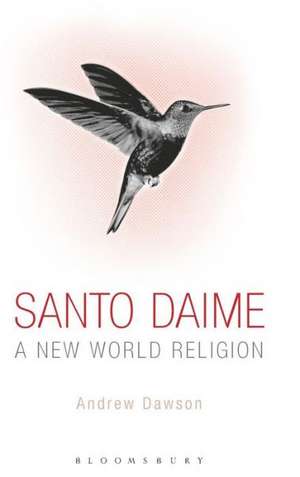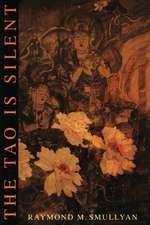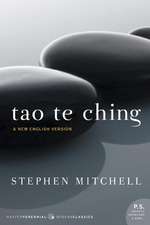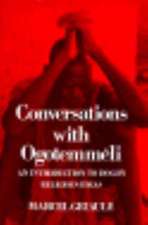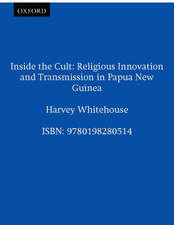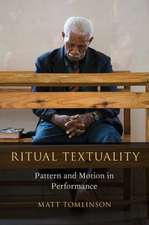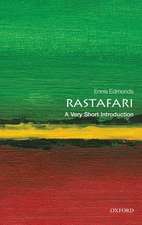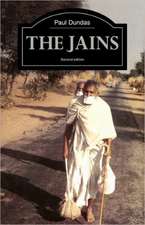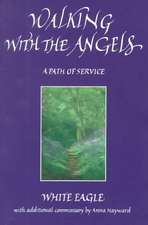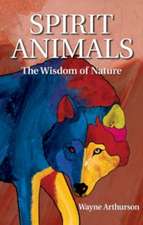Santo Daime: A New World Religion
Autor Dr Andrew Dawsonen Limba Engleză Hardback – 27 mar 2013
| Toate formatele și edițiile | Preț | Express |
|---|---|---|
| Paperback (1) | 238.22 lei 6-8 săpt. | |
| Bloomsbury Publishing – 27 mar 2013 | 238.22 lei 6-8 săpt. | |
| Hardback (1) | 890.72 lei 6-8 săpt. | |
| Bloomsbury Publishing – 27 mar 2013 | 890.72 lei 6-8 săpt. |
Preț: 890.72 lei
Preț vechi: 1141.18 lei
-22% Nou
Puncte Express: 1336
Preț estimativ în valută:
170.43€ • 177.95$ • 141.06£
170.43€ • 177.95$ • 141.06£
Carte tipărită la comandă
Livrare economică 04-18 aprilie
Preluare comenzi: 021 569.72.76
Specificații
ISBN-13: 9781441102997
ISBN-10: 144110299X
Pagini: 240
Dimensiuni: 156 x 234 x 18 mm
Greutate: 0.52 kg
Ediția:New.
Editura: Bloomsbury Publishing
Colecția Bloomsbury Academic
Locul publicării:London, United Kingdom
ISBN-10: 144110299X
Pagini: 240
Dimensiuni: 156 x 234 x 18 mm
Greutate: 0.52 kg
Ediția:New.
Editura: Bloomsbury Publishing
Colecția Bloomsbury Academic
Locul publicării:London, United Kingdom
Caracteristici
Discussion of its historical trajectory, contemporary beliefs and practices, and key organizational features.
Notă biografică
Andrew Dawson is Senior Lecturer in Religion at Lancaster University, UK.
Cuprins
Introduction \ 1. Historical Origins and Contemporary Directions \ 2. The Daimista Ritual Repertoire: Disciplinary Regime and Dynamic Field of Force \ 3. New World - New Selves: Daimista Discourse as an Apolitics of Transformation \ 4. Ritual Reinvention: Shifting Profiles of Spirit-Oriented Practice \ 5. Santo Daime in Late-Modern Context \ Postscript \ Notes \ Bibliography \ Index
Recenzii
This work is important as there are very few academic or anthropological texts widely available in English on this subject.
Aimed at undergraduate students and researchers working in Religious Studies, Sociology of Religion, Anthropology, Cultural Studies and Latin American Studies, this work is important as there are very few academic or anthropological texts widely available in English on this subject.
This book is important reading for anyone interested in religion in the contemporary world.
Highly informative and enlightening ... A unique contribution to the discipline and an important example for fieldwork in religion.
Impressive ... A book of exemplary research and keen insight ... [An] exceptional ethnographic case study ... [and a] systematic and nuanced portrait of religious change.
A sophisticated treatment of an older new religion ... The book is a welcome contribution to the study of religion in the globalized and (post- or late-)modernized world.
Andrew Dawson is the acknowledged expert on Santo Daime. This book reveals both the depth of his insight and the significance of Santo Daime for the study of religion in late modernity.
Dawson's book is a welcome contribution to the study of contemporary spirituality, a field traditionally dominated by research conducted in Western European and North American settings. Tracing Santo Daime on its journey from the Amazon to Brazil's individualized and subjectivized urban middle class, he paints its transformation in bright ethnographic colors, delving deeply into the complex relationship between religion and modernity.
Andrew Dawson provides us with a sophisticated and well -researched insight into the origins, nature, gradual transformation, and larger social significance of this fascinating and now global new religion from Brazil. One of the best case studies of a new religion ever published, this book gives us more than just an understanding of an exotic new way of being religious, it concretely explores the complexities of the relations between late-modern subjectivized selves and a neo-traditional and collective framework of religious practice.
In this absorbing volume, Andrew Dawson takes us on a trip from the Amazonian origins of Santo Daime to international middle-class professional circles, where lawyers and doctors indulge in the psychotropic ritual consumption of ayahuasca. Drawing on both detailed empirical data and a wide range of theoretical perspectives, Dawson illuminates the complex and dynamic interrelationships between collective belonging and the individualisation and subjectivization of contemporary religiosity, explaining how the world-rejecting aestheticism of Santo Daime combines with the this-worldly concerns of an apolitical counterculture. Provocative and instructive, this is a book to be recommended to anyone interested in the ever-increasing varieties of religious experience.
Aimed at undergraduate students and researchers working in Religious Studies, Sociology of Religion, Anthropology, Cultural Studies and Latin American Studies, this work is important as there are very few academic or anthropological texts widely available in English on this subject.
This book is important reading for anyone interested in religion in the contemporary world.
Highly informative and enlightening ... A unique contribution to the discipline and an important example for fieldwork in religion.
Impressive ... A book of exemplary research and keen insight ... [An] exceptional ethnographic case study ... [and a] systematic and nuanced portrait of religious change.
A sophisticated treatment of an older new religion ... The book is a welcome contribution to the study of religion in the globalized and (post- or late-)modernized world.
Andrew Dawson is the acknowledged expert on Santo Daime. This book reveals both the depth of his insight and the significance of Santo Daime for the study of religion in late modernity.
Dawson's book is a welcome contribution to the study of contemporary spirituality, a field traditionally dominated by research conducted in Western European and North American settings. Tracing Santo Daime on its journey from the Amazon to Brazil's individualized and subjectivized urban middle class, he paints its transformation in bright ethnographic colors, delving deeply into the complex relationship between religion and modernity.
Andrew Dawson provides us with a sophisticated and well -researched insight into the origins, nature, gradual transformation, and larger social significance of this fascinating and now global new religion from Brazil. One of the best case studies of a new religion ever published, this book gives us more than just an understanding of an exotic new way of being religious, it concretely explores the complexities of the relations between late-modern subjectivized selves and a neo-traditional and collective framework of religious practice.
In this absorbing volume, Andrew Dawson takes us on a trip from the Amazonian origins of Santo Daime to international middle-class professional circles, where lawyers and doctors indulge in the psychotropic ritual consumption of ayahuasca. Drawing on both detailed empirical data and a wide range of theoretical perspectives, Dawson illuminates the complex and dynamic interrelationships between collective belonging and the individualisation and subjectivization of contemporary religiosity, explaining how the world-rejecting aestheticism of Santo Daime combines with the this-worldly concerns of an apolitical counterculture. Provocative and instructive, this is a book to be recommended to anyone interested in the ever-increasing varieties of religious experience.
